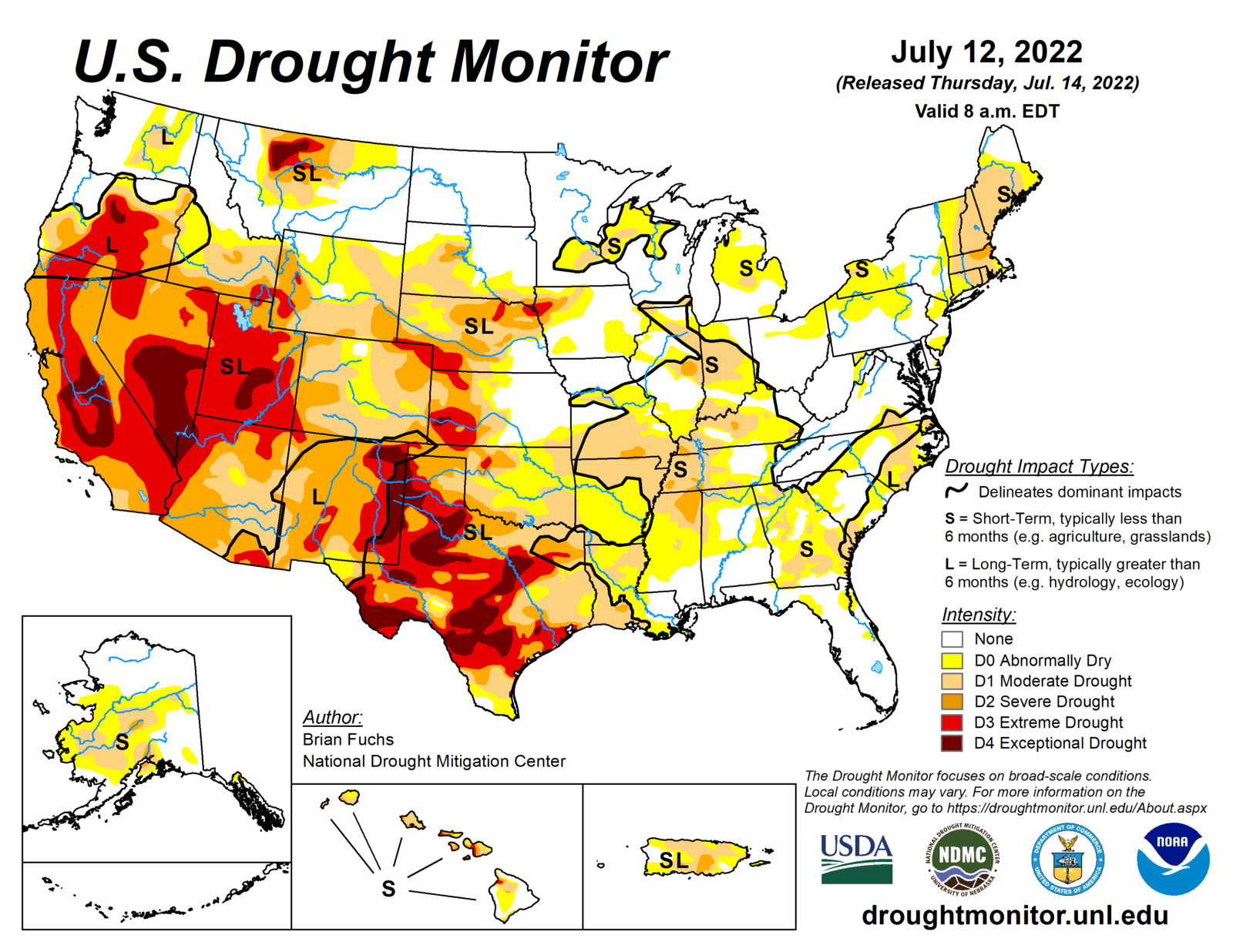Though 100 degree-plus weather is on its way next week, unanticipated cool, wet weather in May and June prompted the Washington Department of Ecology to cancel the drought declaration for Central and Eastern Washington.
Water supply conditions have been much better than expected. As a result, no part of Washington is experiencing drought conditions, says the agency.
The decision to end the drought declaration came after the second-wettest May through June in Washington since 1895.
According to state law, a drought can be declared when the water supply in an area is below 75% of normal and there is an expectation of undue hardship. The lowest streamflow forecast in the state – the Colville River at 86% of normal – is now well above that threshold. Some streamflow forecasts are much higher.
Unseasonably cool weather over the spring and early summer has preserved snowpack, causing it to last longer into the summer, which will support late-summer water supply needs according to Jeff Marti, Ecology’s statewide drought coordinator.
“Conditions have improved. All areas of the state, including the five watersheds specified in the drought declaration, have received significantly above-normal precipitation,” Marti said. “The outlook is much better than forecast back in May.”
This year’s conditions are in stark contrast with last year’s. Spring 2021 was the second-driest on record, and then an unprecedented late-June heatwave smashed temperature records across the state.
In response, Ecology issued an emergency drought declaration in July 2021 covering 96% of the state. Only Seattle, Everett and Tacoma – cities with ample water storage – escaped the drought designation.
By May of this year, wetter temperatures brought relief to much of the state, but some portions of eastern Washington had yet to fully recover from 2021’s severe conditions. This led Ecology to extend the drought declaration for five eastern Washington watersheds.
What followed was weather that doubled the usual amount of rain in June for parts of eastern Washington.
“Conditions have been anything but drought-like,” Marti said. “We’ve experienced one of the wettest, coldest springs in recent memory. While the ‘Juneuary’ put a damper on gardening and outdoor activities, it provided a dramatic recovery for water supplies.”
It’s not the same picture for Oregon and southern Idaho.
With little change in drought conditions over recent weeks in Oregon, no new drought declarations have been submitted. Thus far in 2022, Oregon remains steady with 17 counties having Executive Orders issuing drought declarations under state law.
According to the US Drought Monitor, over 66% of Oregon is experiencing
moderate (D1) to exceptional (D4) drought conditions. Drought coverage and
intensity have remained steady over the past two weeks.
June precipitation was well above average throughout a majority of Oregon, with some parts of metro Portland measuring the wettest June on record.
More recently, precipitation over the first three weeks of July was well below average for much of the state, with exception in the southwest. Statewide precipitation at NRCS SNOTEL sites is measuring 103% of the long-term median over the water year to date.
June temperatures ranged within 1°C of the long-term average throughout the state. Temperatures were more variable over the past two weeks, with central and eastern Oregon experiencing more elevated temperatures.
With exception of northwestern Oregon, root zone and shallow groundwater soil moisture profiles remain average to well below average in terms of wetness. Surface soil moisture is more variable throughout the state.
The three-month seasonal climate outlook for July through September indicates probabilities favoring above average temperatures outside of western Oregon. Precipitation is projected to be near average throughout much of the state, with exception in northeastern Oregon which is forecasted for below average.
Streamflows throughout June were well above average for much of western and northern Oregon, including a number of record high flows. Flows in central and eastern Oregon ranged from below average to average.
Significant wildfire potential for July remains above average throughout Oregon’s central corridor. Potential in northwestern Oregon is below average. Conditions are projected to remain similar in August.
In central and southern Idaho, 67 percent of the area is abnormally dry, 45 percent moderate drought, 16 percent severe drought, and 3 percent extreme drought.

